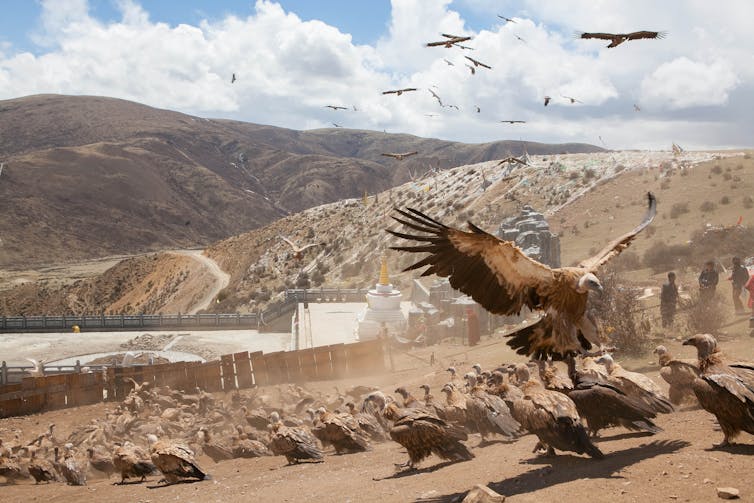My mother died recently and at the funeral home I was asked if I had any ideas what kind of coffin she would like. For some reason I said something environmentally friendly. These words came out of my mouth more out of nervousness than anything previously discussed with my mother. Duly the undertaker showed us a catalogue of wicker coffins and we chose one made of banana leaves.
I often think of my carbon footprint – I have not owned a car in more than 15 years, for example – but I had never thought about my “green obligations” in death.
My mother may not have requested an environmentally friendly coffin, but she did state she wished to be cremated. Due to the lack of space in the UK around 80% of people request cremation – and if we think about green space being at a premium this makes ecological sense.
However the energy required to cremate a single person is equal to the energy they would use in a month if they were alive. In the UK this translates to a yearly energy consumption of a town of 16,000 people. In Asian countries where cremation is very popular there is considerable interest in using solar power to reduce such energy consumption.
Another problem with cremation is air pollution, which obviously depends on the filtering system being employed. Until recent times cremations were one of the major sources of mercury pollution in the UK due to the amalgam fillings in people’s teeth. A group of environmental NGOs recently called on the EU to curb mercury emissions from human cremation. Furthermore, the clothes worn and use of embalming fluids may also increase air pollution.
Humans have buried their dead for at least 100,000 years. Therefore, not wishing to throw the baby out with the bathwater, I looked into different burial options. A woodland burial initially appealed to me. However, I would only really approve of this if it resulted in the maintenance of a high-quality conservation area and wildlife refuge. And I wonder if it became popular enough if it could result in major reforestation of the UK. But bodies would still be rotting in the ground releasing globally warming methane gas.
Surely, there must be greener options than a standard burial or cremation? Coming from a family of fishermen I thought about burial at sea, as the fish could recycle my body quickly. But there are only three registered places in the UK and only around 50 such burials per year. As a biologist, I find the idea of becoming fish food strangely appealing. This is not a new idea: I remember reading of man who macabrely wished the meat from his body fed to the residents at Battersea Dogs Home. Not surprisingly this strange offer was declined.
As a conservationist the idea of recycling my body after death appeals: some Asian cultures have what are called sky burials, where a dead human body is laid out on a mountain top for scavenging animals such as birds of prey to feed on.

From a biological point of view I cannot see anything wrong with this, providing deceased people do not have contagious diseases. Burials in the ground are more to do with people not wishing the body disturbed by animals than hygiene considerations – hence being buried six feet. Unfortunately, as much as I like to imagine my deceased body on the top of Ben Nevis being recycled by golden eagles, I can never see it being allowed in the UK.
I suppose what really appeals to me is being fully recycled in a short time-frame. The problem is that cremation does not fully recycle the body and burials can take years for the recycling process to occur. Thus, if my body could be fully recycled quickly into the nutrient cycles, thereby allowing the burial plot to be constantly reused then I may have found a biologically acceptable method to dispose of my body when the time comes.
A company in Sweden has tested a concept of eco-burial on dead pigs (pigs are good models for the human body), whereby the animal is frozen in liquid nitrogen at -196°C, which makes the body become brittle and disintegrate. In the case of a human, the disintegrated body would be filtered for metals (such as tooth fillings) and then buried in a shallow grave.
In tests with pigs the remains become rich compost in six to twelve months. Plus this sort of eco-burial does not release greenhouse gases such as methane (from traditional burials) or carbon (from cremations) into the atmosphere. The only problem being it is still in development.

